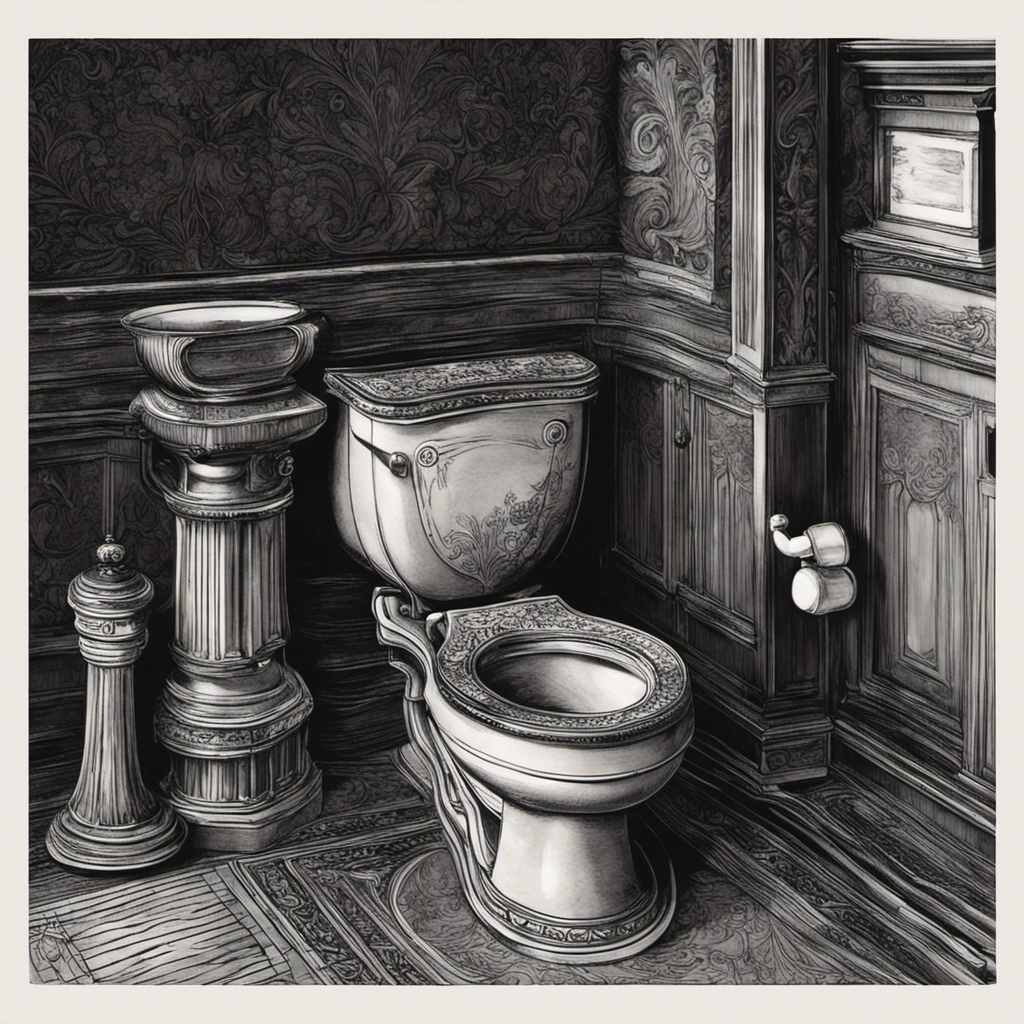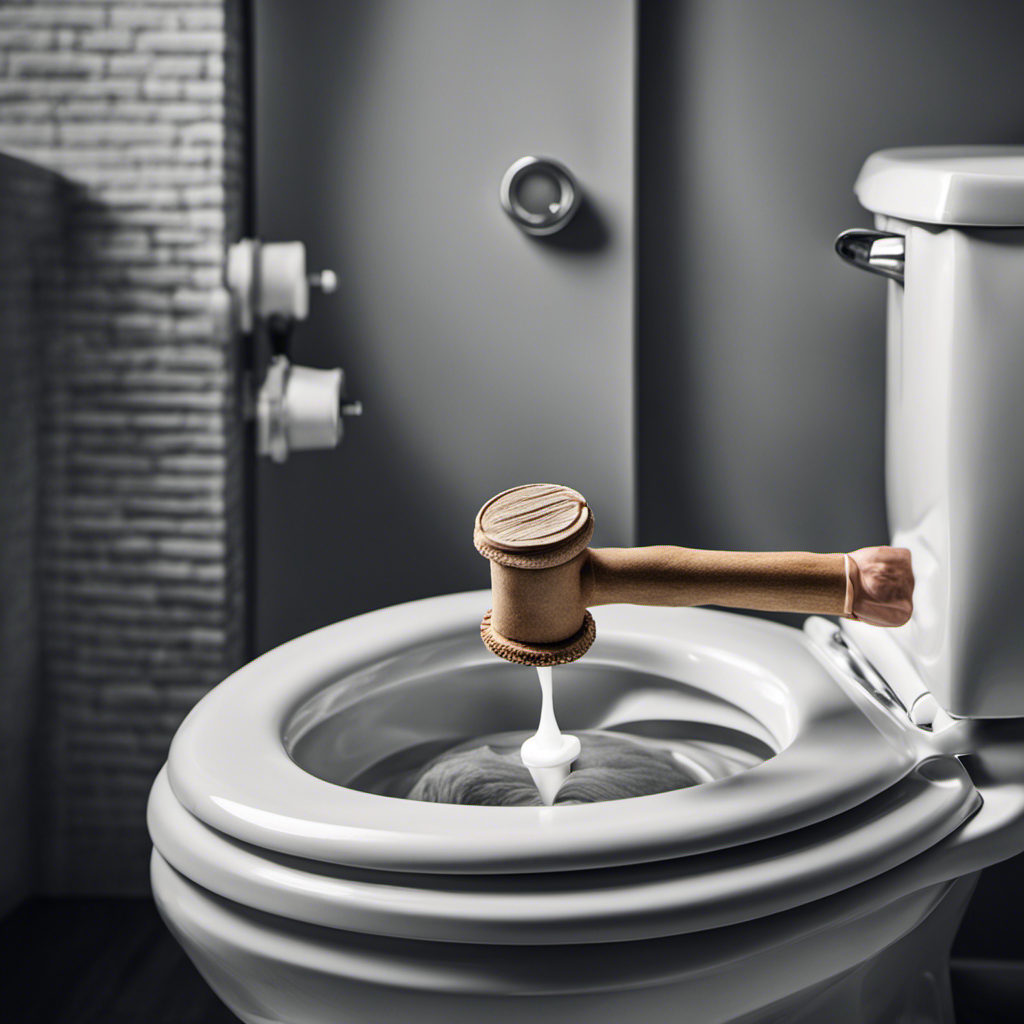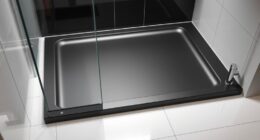Ever been caught in a tricky spot with a toilet that refuses to flush? We’ve all encountered it. But don’t worry, we’re on hand to guide you through becoming proficient in the skill of flushing a toilet.
In this article, we’ll share expert tips and techniques to get your toilet flushing like a champ. From checking for clogs to adjusting the flush valve, we’ve got you covered.
So let’s dive in and say goodbye to toilet troubles once and for all.
Key Takeaways
- Use a plunger or toilet auger to check for and dislodge clogs.
- Adjust the float valve and inspect the fill tube for proper water level maintenance.
- Ensure the flush valve is properly aligned and clean to improve flushing power.
- Regularly inspect and replace the flapper if necessary for a proper seal.
- Clean the jet holes with a wire brush or vinegar to improve water flow and flushing performance.
Check for Clogs
We recommend using a plunger to check for clogs in your toilet. Toilet troubleshooting often begins with identifying and addressing any blockages that may be preventing proper flushing.
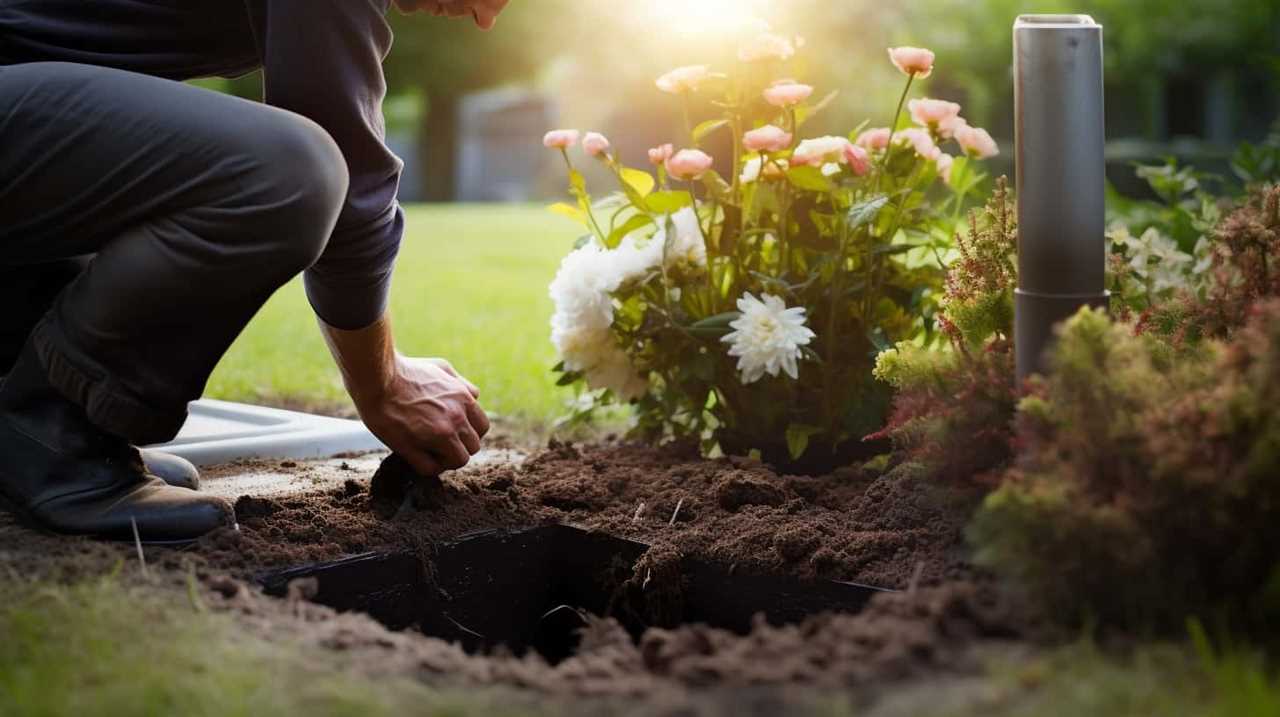
To begin, ensure you have a high-quality plunger specifically designed for toilets. Place the plunger over the drain hole in the bowl, making sure it forms a tight seal. Then, vigorously push and pull the plunger to create suction and dislodge the clog. Repeat this process several times if necessary.
If the plunger fails to resolve the issue, you may need to try alternative methods, such as using a toilet auger or calling a professional plumber. By attempting these DIY toilet repairs, you can save time and money while becoming more knowledgeable about your toilet’s functioning.
Ensure Proper Water Level
To ensure proper water level in your toilet, there are two key points to consider: adjusting the float valve and checking the fill tube.
The float valve controls the water level in the tank and can be adjusted to prevent overfilling or underfilling.
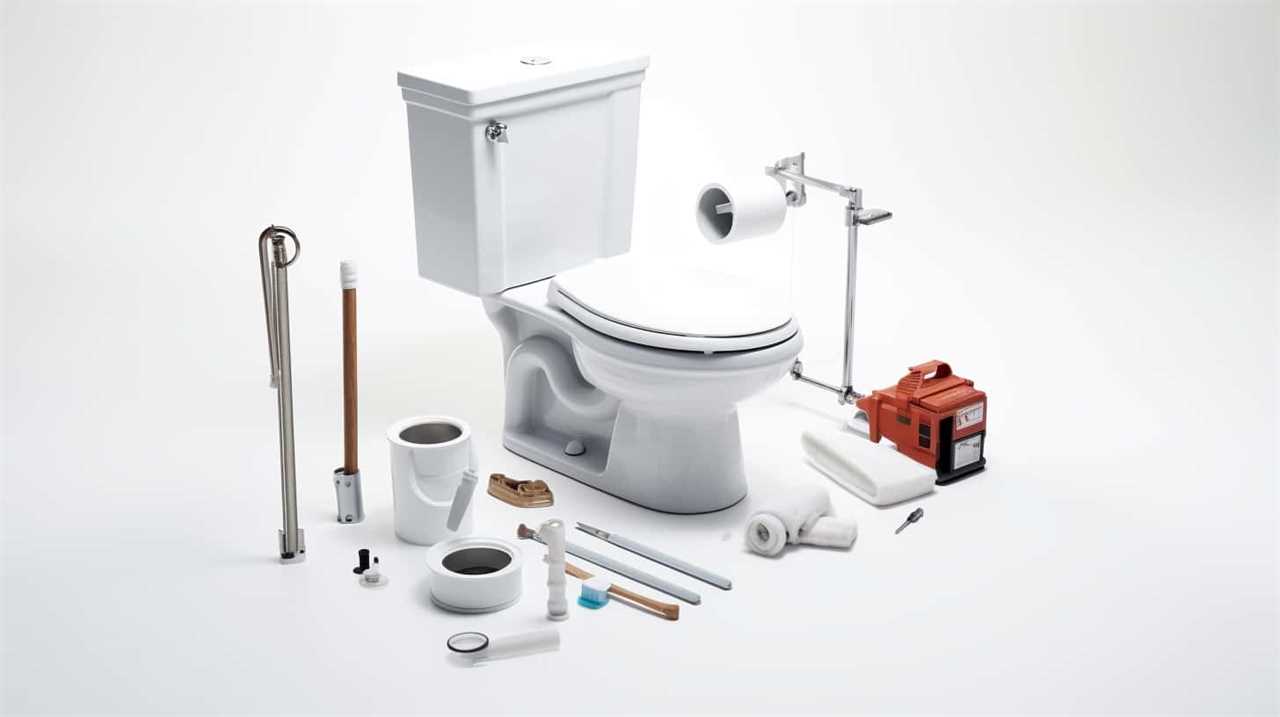
The fill tube, on the other hand, should be securely attached to the overflow pipe to ensure that water flows properly into the bowl.
Adjust Float Valve
To maintain proper water level in your toilet, it’s important to regularly adjust the float valve.
The float valve is responsible for controlling the amount of water in the toilet tank. If the water level is too low, it may not provide enough force to flush waste effectively. On the other hand, if the water level is too high, it can cause the toilet to constantly run and waste water.
To adjust the float valve, locate the adjustment screw or rod on top of the valve. Turn the screw or adjust the rod to either raise or lower the float. Test the water level after each adjustment, ensuring it’s set to the manufacturer’s recommended level.

Check Fill Tube
To continue ensuring the proper water level in your toilet, it’s important to check the fill tube for any issues.
The fill tube is a small, flexible tube that connects the fill valve to the overflow tube. Its purpose is to direct water into the bowl during the flushing process. If the fill tube is damaged or blocked, it can disrupt the water flow and prevent the toilet from flushing properly.
To troubleshoot the toilet, start by inspecting the fill tube for any cracks, kinks, or obstructions. If you notice any damage, you’ll need to replace the fill tube. This is a relatively simple task that can be done with basic tools and a replacement fill tube, which can be purchased at most hardware stores.
Adjust the Flush Valve
We can adjust the flush valve to improve the flushing performance of our toilet. Here are some steps to help troubleshoot a weak flush and check for leaks:
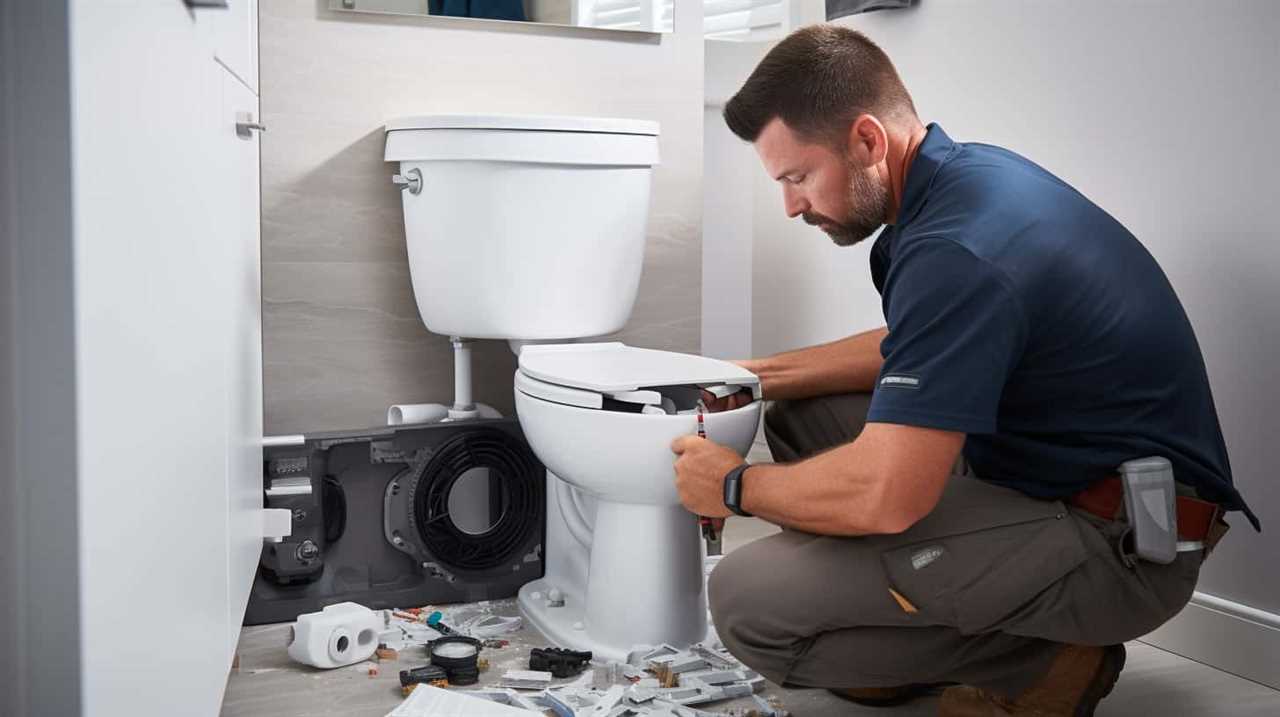
- Inspect the flush valve: Ensure that it’s properly aligned and tightly secured. If it’s loose, tighten it using a wrench or pliers.
- Adjust the water level: If the water level is too low, it can affect the flushing power. Check the fill valve and adjust it to the appropriate level.
- Clean the flush valve: Over time, mineral deposits can accumulate on the flush valve, affecting its performance. Use a brush or vinegar to remove any buildup.
Inspect the Flapper
Let’s start by examining the condition of the flapper. The flapper is a rubber or plastic valve that controls the flow of water from the tank into the bowl. Over time, the flapper can become worn or warped, leading to issues with flushing.
To inspect the flapper, remove the tank lid and flush the toilet. Observe if the flapper closes fully after flushing. If it doesn’t, there may be a problem. Look for any signs of damage or debris that could be preventing a proper seal. If the flapper is damaged or not sealing correctly, it may need to be replaced. Troubleshooting flapper issues can often solve flushing problems.
Now, let’s move on to the next step: cleaning the jet holes.
Clean the Jet Holes
To ensure proper water flow and improve the flush of your toilet, it’s important to regularly maintain and clean the jet holes.
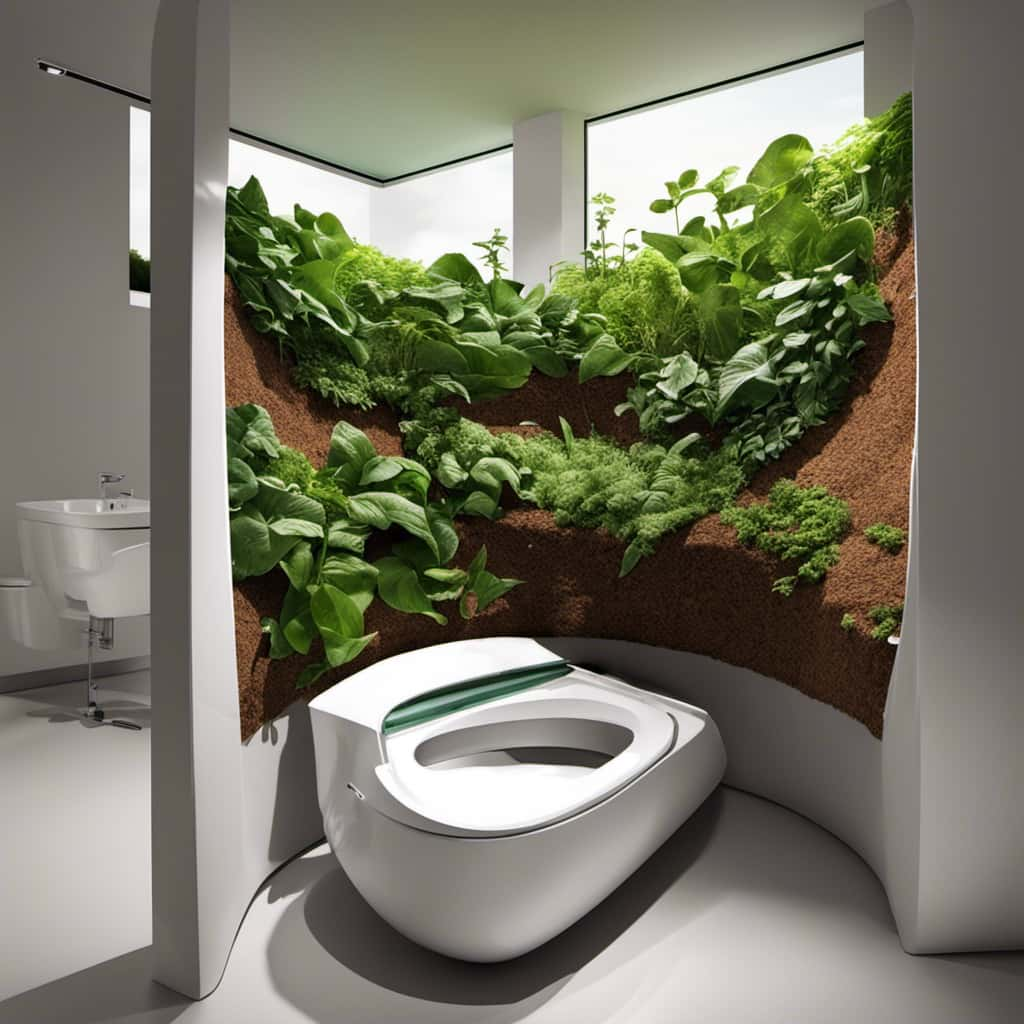
Jet hole maintenance involves removing any debris or mineral buildup that may be obstructing the flow of water.
Jet Hole Maintenance
One way to improve toilet flush performance is by cleaning the jet holes regularly. Maintaining the jet holes is crucial for ensuring a powerful and efficient flush. Here are some maintenance tips and troubleshooting techniques to keep your jet holes clean:
- Use a wire brush or small brush to scrub the jet holes and remove any mineral deposits or debris.
- Vinegar can be used to dissolve stubborn clogs and mineral build-up. Simply pour vinegar into the overflow tube and let it sit for a few hours before scrubbing the jet holes.
- For more stubborn clogs, a plumber’s snake can be used to dislodge any blockages in the jet holes.
By regularly cleaning the jet holes and keeping them free from obstructions, you can improve the flow of water and enhance the flushing performance of your toilet.
Now, let’s explore some techniques to further improve the flush.

Improving Toilet Flush
To improve our toilet flush performance, we need to ensure the jet holes are clean and free from obstructions. The jet holes in a toilet are responsible for directing water into the bowl, creating the necessary force for an effective flush. Over time, these holes can become clogged with mineral deposits or debris, resulting in reduced water flow and a weak flush.
To address this issue, regularly clean the jet holes using a wire hanger or a small brush. Additionally, increasing water pressure can help improve the flush. One way to achieve this is by installing a dual flush system, which allows you to choose between a partial or full flush, conserving water while maintaining a powerful flush.
By keeping the jet holes clean and considering options like a dual flush system, you can ensure optimal toilet flush performance.
Now let’s move on to the next section and discuss how to ensure proper water flow.
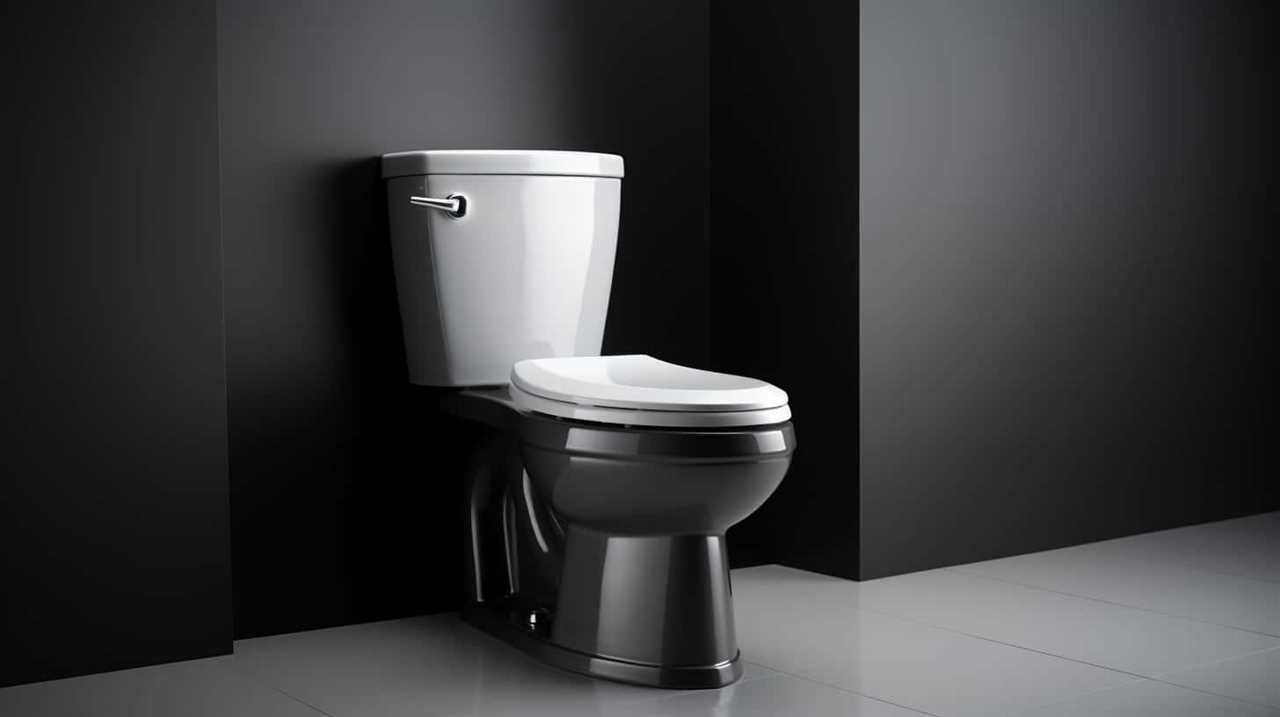
Ensuring Proper Water Flow
To ensure proper water flow in our toilets, we must clean the jet holes regularly to remove any obstructions. Neglecting this maintenance can lead to reduced flushing power and potential clogs. Here are some important steps to follow when cleaning the jet holes:
- Start by turning off the water supply to the toilet.
- Remove the tank lid and locate the jet holes. They’re usually located around the rim of the toilet bowl.
- Take a small brush, such as a toothbrush, and dip it in a mixture of water and toilet bowl cleaner.
- Gently scrub the jet holes to remove any mineral deposits or debris.
- Rinse the jet holes thoroughly with clean water.
If you have recently installed a bidet, it’s especially important to clean the jet holes regularly, as these devices can sometimes cause a buildup of residue.
Use a Plunger
We can easily unclog a stubborn toilet by plunging it vigorously. Plungers are a common tool used to clear toilet blockages and are readily available in most households. They work by creating pressure and suction, which helps to dislodge the clog.
To use a plunger effectively, ensure a tight seal by pressing it firmly against the drain hole at the bottom of the toilet bowl. Then, push and pull the plunger vigorously, maintaining the seal. This action will create a suction force that can dislodge the clog and restore proper water flow.

If the plunger fails to resolve the issue, there are alternatives such as toilet augers that can be used. In the next section, we’ll discuss how to use a toilet auger to unclog a toilet.
Try a Toilet Auger
Continuing from our previous discussion, let’s explore another option to unclog a stubborn toilet: using a toilet auger.
A toilet auger, also known as a closet auger, is a specialized tool designed to clear blockages in the toilet’s trap.
Here are some alternatives to consider if you want to try a toilet auger:
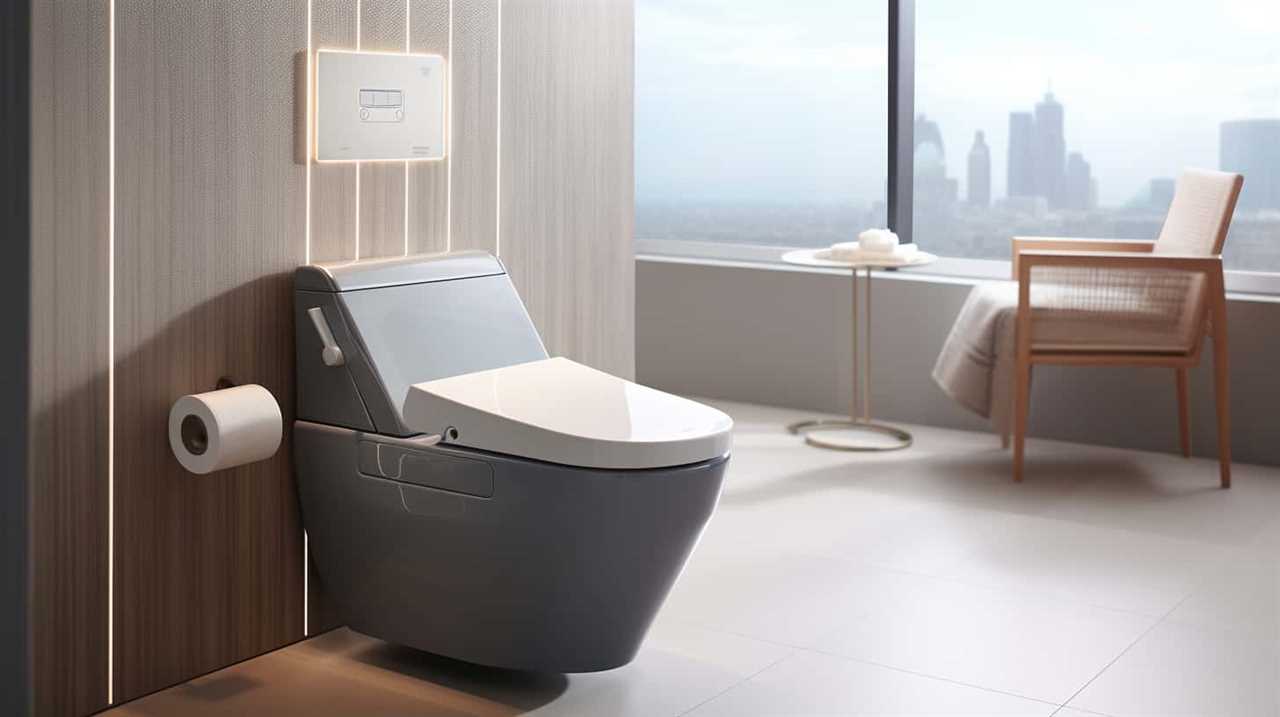
- Flexible toilet auger: This type of auger has a long, flexible cable that can navigate through the toilet’s curves and bends, making it easier to reach and remove obstructions.
- Power auger: If the blockage is particularly stubborn, a power auger can provide the extra force needed to break it up and clear the toilet.
- Toilet snake: Similar to a toilet auger, a toilet snake is a versatile tool that can be used to remove clogs from toilets, sinks, and drains.
When troubleshooting a toilet flush, a toilet auger can be a useful tool to have on hand. It allows you to reach and remove blockages that a plunger may not be able to handle.
Consider a Water Pressure Adjustment
One option to further explore when troubleshooting a toilet flush is adjusting the water pressure. Water pressure plays a crucial role in the proper functioning of a toilet, and low water pressure can lead to common toilet flushing problems.
To adjust the water pressure, locate the shut-off valve near the toilet and turn it clockwise to decrease the pressure or counterclockwise to increase it. It’s important to make small adjustments and test the flush after each adjustment to avoid damaging the toilet or causing leaks.
If adjusting the water pressure doesn’t resolve the flushing problem, it may be necessary to seek professional help. A plumbing expert can diagnose the issue and provide the appropriate solution for your specific situation.

Seek Professional Help if Necessary
If the adjustments to water pressure don’t resolve the flushing problem, it may be necessary to consult a professional for assistance. Seeking professional advice can help you identify and address the underlying issues that may be causing your toilet to not flush properly.
Here are some reasons why seeking professional help might be necessary:
- Complex Mechanical Problems: A plumber will have the expertise to diagnose and repair any complex mechanical issues that may be affecting your toilet’s flushing ability.
- Structural or Plumbing Issues: Professionals can assess whether there are any structural or plumbing problems, such as blockages or leaks, that could be causing the flushing problem.
- Safety Concerns: If you’re unsure about DIY troubleshooting techniques or feel uncomfortable working with plumbing systems, it’s best to leave the job to a professional to avoid any accidents or further damage.
Frequently Asked Questions
How Do I Fix a Leaking Toilet Tank?
To fix a leaking toilet tank, we need to identify the source of the leakage. Common causes include a faulty flapper valve or a loose connection. Once identified, we can replace the faulty parts or tighten the connection to stop the leakage.
What Should I Do if My Toilet Bowl Is Not Filling With Water?
When the toilet bowl isn’t filling with water, it’s essential to address the issue promptly. Performing regular toilet bowl maintenance and troubleshooting common toilet issues can help ensure proper functionality and prevent further complications.
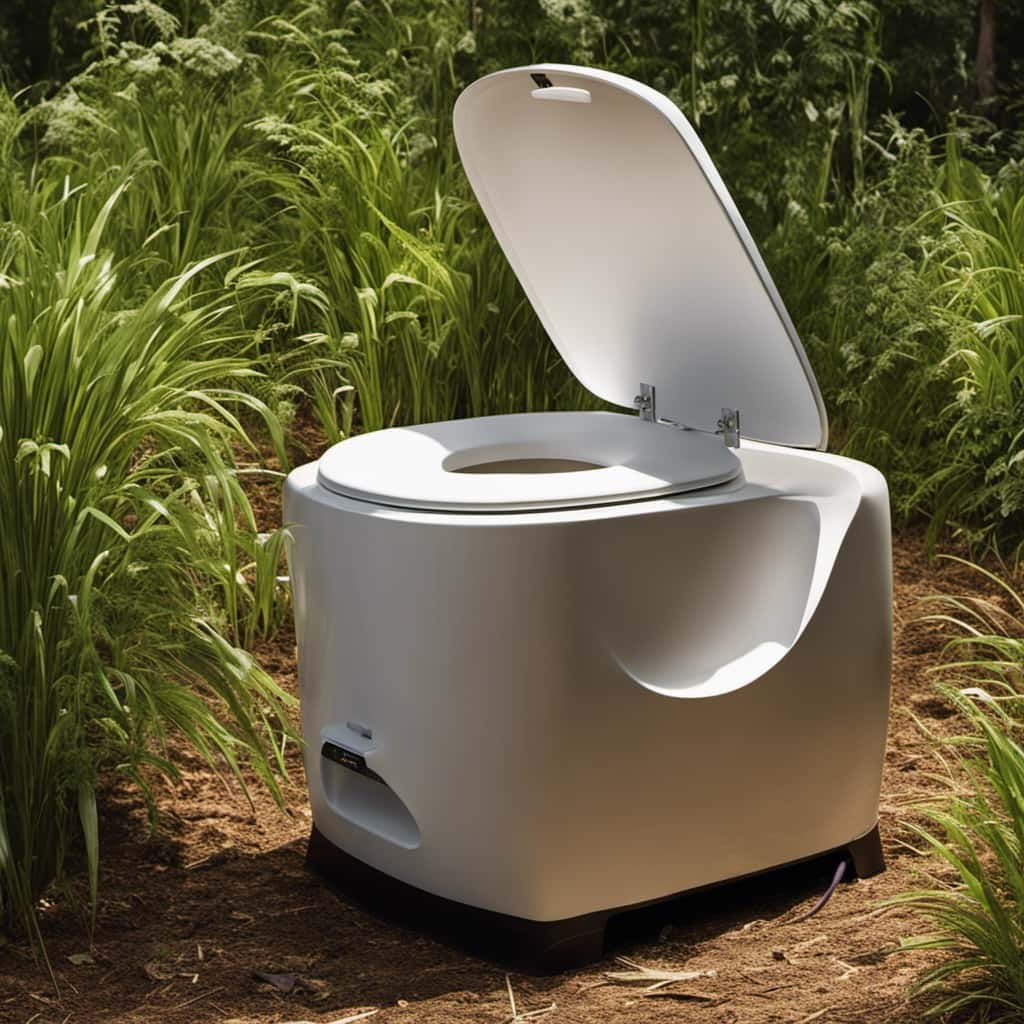
How Can I Prevent My Toilet From Constantly Running?
To prevent a constantly running toilet, check the toilet flapper and toilet fill valve. The flapper may be worn or misaligned, causing water to leak. The fill valve may need adjustment or replacement. Consult a professional for assistance if needed.
What Are the Signs That My Toilet Needs a New Flapper?
When a toilet flapper wears out, signs like water leaks, weak flush, or constant running become apparent. Troubleshooting toilet flush issues may lead to the need for a toilet flapper replacement.
How Do I Know if My Toilet Has a Clog That Requires Professional Help?
If your toilet doesn’t flush, it could be due to a clog. Before calling a professional, try DIY solutions like using a plunger or a toilet auger. If the problem persists, it may require professional help.
Conclusion
In conclusion, by following these simple steps, you can easily troubleshoot and fix common issues with your toilet’s flushing mechanism.
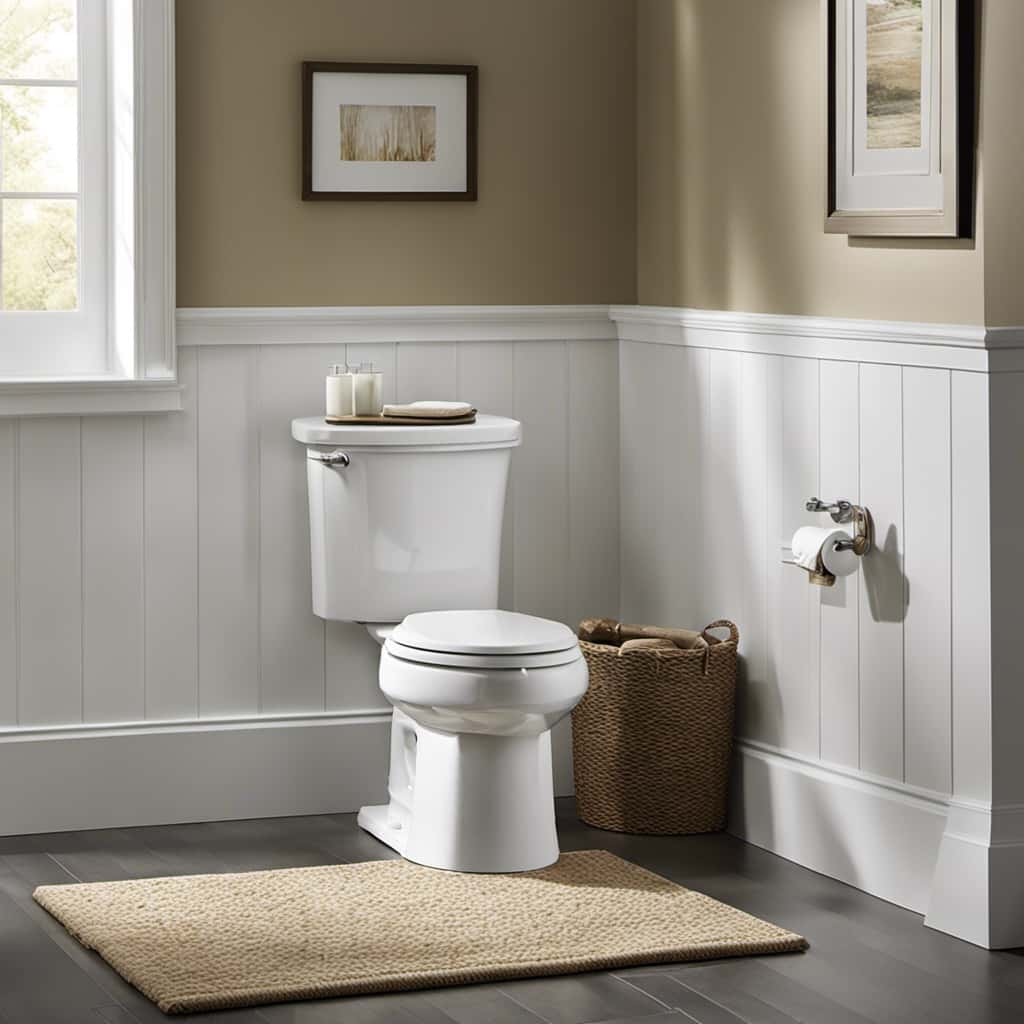
While some may find the process daunting, it’s important to remember that with a bit of knowledge and patience, anyone can successfully resolve these problems.
Don’t be afraid to tackle the issue yourself, but remember to seek professional help if needed.
With the right approach, you’ll have your toilet flushing smoothly in no time.



